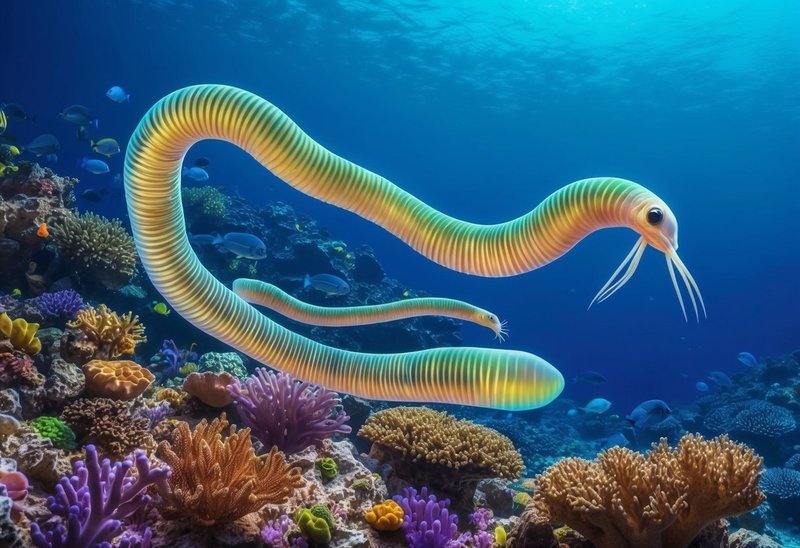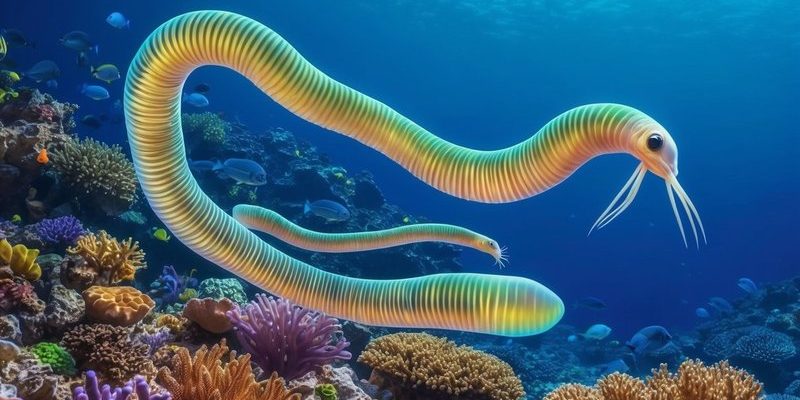
Let’s dive into the world of these remarkable worms. Imagine a skilled predator lurking just beneath the sand, ready to pounce on any unsuspecting prey that comes too close. Bobbit worms are a bit like stealthy ninjas of the ocean floor, capable of surprising even the most cautious fish. Understanding whether they hunt alone or in groups reveals not just their behavior, but also their role in the marine ecosystem.
What Exactly Is a Bobbit Worm?
Bobbit worms, or *Eunice aphroditois*, are large marine polychaetes that can grow up to 10 feet long. They have a distinctive appearance, with a segmented body and a head adorned with sharp jaws that resemble pincers. You might think of them as underwater predators that blend into their surroundings, waiting for the perfect moment to strike.
These worms are typically found in tropical and subtropical waters around the world, often buried in the sand or coral reefs. Their clever camouflage allows them to ambush prey, making them formidable hunters. But the real question is: how do they hunt?
Bobbit Worm Hunting Strategies
Here’s the thing: Bobbit worms are incredibly patient hunters. They use a method called “sit-and-wait” predation, meaning they stay hidden and wait for their prey to come within reach. When a fish or crustacean swims too close, the Bobbit worm lashes out with lightning speed, capturing its meal with those deadly jaws.
What’s fascinating is that they can sense vibrations in the water, alerting them to potential meals. It’s like having a sixth sense! This hunting strategy means they don’t need to chase down their food actively; instead, they rely on stealth and patience.
Do Bobbit Worms Hunt Alone?
You might be wondering whether Bobbit worms prefer to hunt in groups or if they operate solo. Generally, these worms are solitary hunters. They each stake out their own territory, using their unique hunting style to maximize their chances of capturing meals.
Hunting alone has its advantages; it reduces competition for food and minimizes the risk of alerting potential prey. Imagine if two Bobbit worms were hunting in the same area. The vibrations might confuse their target fish, making it harder for either worm to catch a meal. By staying solitary, they can be more efficient predators.
Group Behaviors in Bobbit Worms
While Bobbit worms are primarily solitary hunters, that doesn’t mean they can’t be found near each other. It’s not uncommon to spot several Bobbit worms in close proximity, especially in areas with abundant food sources. However, this doesn’t indicate a hunting partnership. Instead, it’s more about utilizing the available territory and resources.
Even when they’re near one another, each worm operates independently. They’re not like a pack of wolves hunting together; they don’t strategize or coordinate their attacks. This solo approach allows them to stake their claims in a competitive environment.
The Role of Bobbit Worms in the Ecosystem
Despite their solitary nature, Bobbit worms play a crucial role in their environments. As predators, they help maintain balance in the marine ecosystem. By preying on smaller fish and crustaceans, they contribute to controlling those populations, ensuring that no single species dominates.
Their burrowing habits also help aerate the sand and create habitats for other marine organisms. Think of them as nature’s little caretakers—by hunting and living in the sand, they support a healthy underwater community.
Challenges Bobbit Worms Face
Like many creatures, Bobbit worms face challenges in their environments. Habitat destruction, pollution, and climate change threaten their survival. When ocean temperatures rise or waters become more acidic, it can impact their food sources and overall health.
Understanding the solitary hunting behavior of Bobbit worms helps highlight the importance of protecting their habitats. If these incredible predators struggle, it can have ripple effects throughout the entire marine ecosystem.
So, to answer the question: Bobbit worms primarily hunt alone. Their solitary nature allows them to be effective predators, lurking beneath the surface and waiting for the perfect moment to strike. Yet, they still play a crucial role in the larger marine ecosystem, ensuring balance and health in their underwater world.
Next time you think about these remarkable worms, remember their stealthy ways and solitary habits. They might be hidden beneath the sand, but their impact is felt throughout the ocean. By understanding their behavior, we can appreciate the intricate web of life that exists below the waves.

